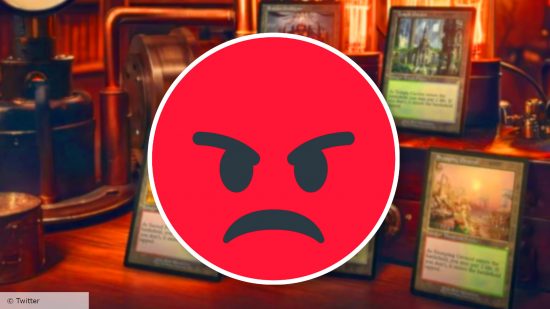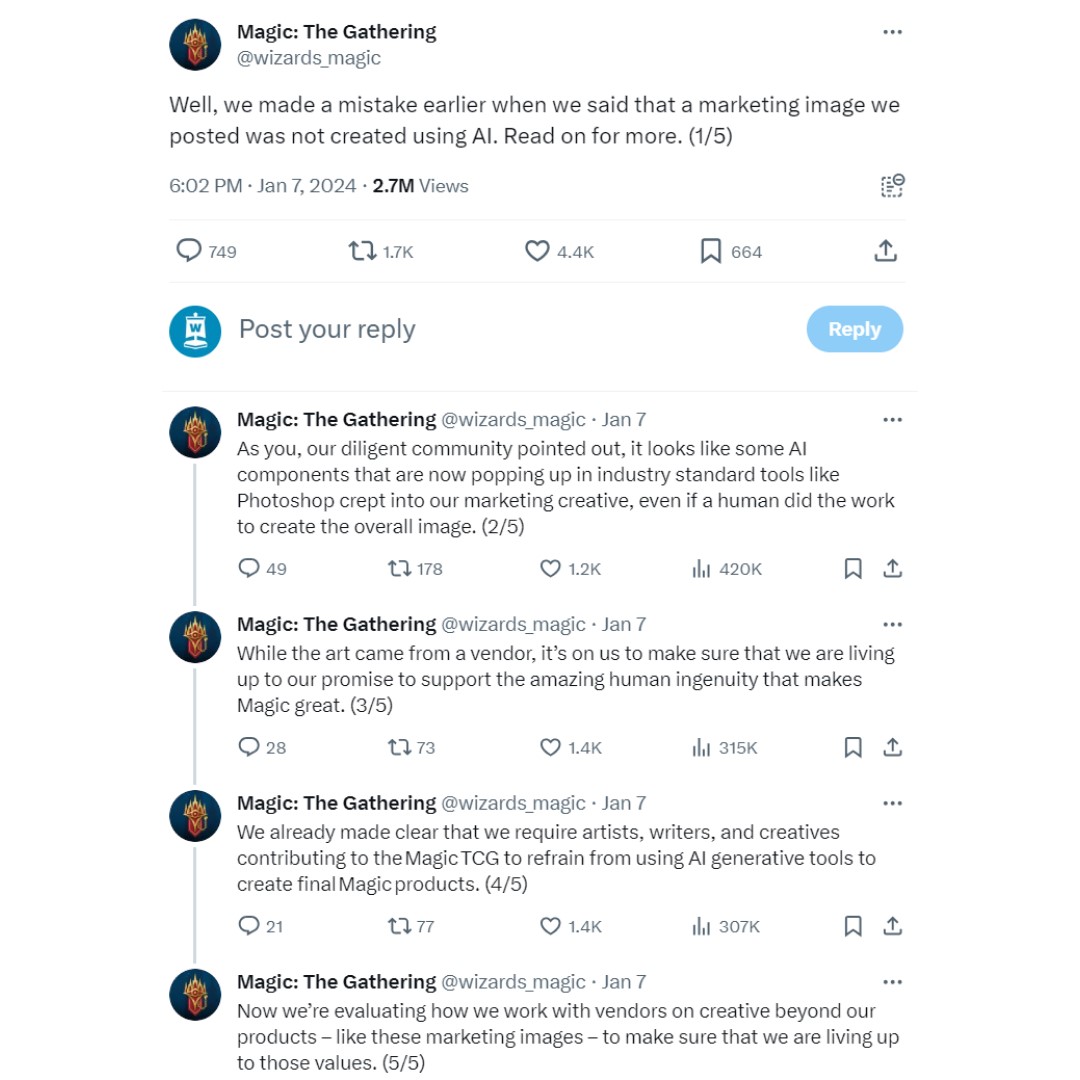Wizards of the Coast using – and apologizing for using – AI art in its products and advertising is on the verge of becoming a trend. These multiple instances of covert Artificial Intelligence use, caught and called out by the community, have made one thing clear to me. We should hold Wizards accountable, but if we want to keep AI art out of games like Dungeons and Dragons and Magic: The Gathering, getting angry at the publisher isn’t going to be enough.
In case you missed the recent discussion on this topic, let me bring you up to speed. DnD and MTG publisher Wizards of the Coast first published its guidelines to keep AI art out of its products in August 2023 – after it apologized to the community for using the emerging technology in a DnD book.
On January 8, Wizards had to apologize again for using AI art in an MTG Ravnica ad. Wizards had initially defended the image as totally human-made when the community raised accusations, but it quickly backtracked and confirmed the presence of AI in the making of the picture.
In both these cases, Wizards of the Coast claims it didn’t know AI art was used during production. Most recently, the publisher acknowledges its failure not only to spot AI, but also to realize that “AI components that are now popping up in industry-standard tools like Photoshop crept into our marketing creative”.
I want to make clear that I’m not absolving Wizards of the Coast of blame here – this isn’t a ‘leave Britney alone’ style speech. Fans concerned about AI art should absolutely speak up and hold those using it (especially without revealing that fact) accountable. As many other tabletop RPG publishers who condemned AI art early have made clear, the technology is a serious threat to the quality of our DnD books and MTG sets, as well as the livelihoods of the writers and artists making them.
My point is that the buck shouldn’t stop with Wizards of the Coast. Keeping the pressure on the publisher may result in stricter vetting processes for art or more restrictions on creators using AI tools (fingers crossed), but AI art is evolving so fast that corporate policies and even laws are struggling to keep up.
Simply criticizing the company when it fumbles and waiting for its reaction isn’t enough. I’m wary of the community’s neighborhood watch approach to AI art as it is – we ourselves are not experts on AI, and our hyper-vigilant attempts to spot it in Wizards’ work have already led to problematic false accusations.
If we truly want to lock the doors and barricade the windows against AI art, the community must take its concerns elsewhere, too. To companies like Photoshop who normalize the use of AI in their software, for example. To trade unions who are actively lobbying to protect the rights of creators. Or to governing bodies currently debating the legal and ethical approaches they’ll use for this new, quick-learning beast.
You should be angry at the use of AI art in tabletop RPGs (in the non-harassment, not witch-hunting kind of way – bullying helps nobody). But its use is an issue that extends far beyond the borders of the tabletop gaming community, and it’s shortsighted to only voice our concerns within those walls.
For more on this topic, here’s my chat with a variety of TTRPG publisher’s on the Pandora’s Box that is AI art, as well as that time the creator of Gloomhaven called AI art “theft”.

